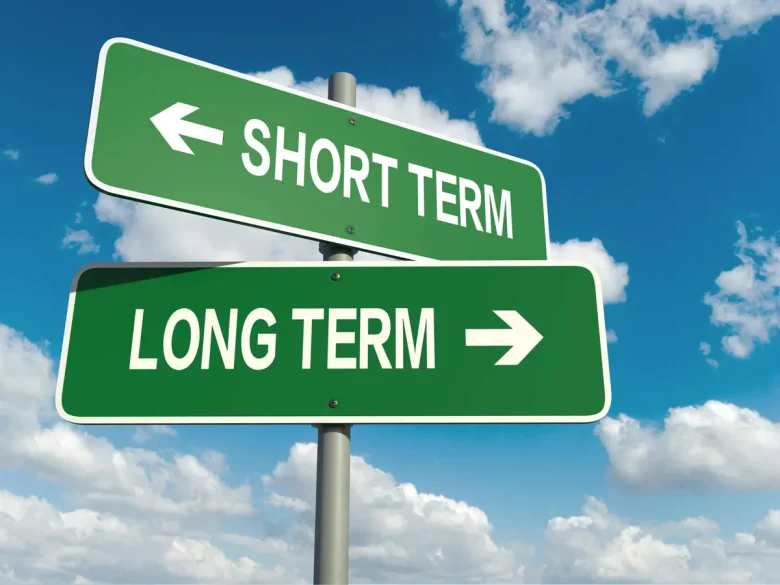Most people don’t realize how important financial planning is until it’s too late. A clear financial plan can help you achieve a more secure and stable future, whether you are juggling your monthly expenses or planning to retire. The path to financial planning is not a single one. It has two levels of focus: the short-term, and the long-term. They each have different purposes and require unique approaches. But understanding the way these two strategies complement one another can unlock financial success. This article will compare the key differences between short-term and longer-term financial planning and show you how to combine them for a successful financial future.
Understanding Short-Term Finance
Financial planning for the short term is focused on goals and expenses that are immediate, usually covering a period of less than a year. It’s about managing “now.” This includes building an emergency fund, paying down high-interest debt, or saving towards a short-term objective like a wedding or vacation.
This type of planning relies on a detailed understanding of your income and expenses. The first step is to create a detailed budget for each month. This allows you to keep track of your spending in different categories, such as housing, groceries, and transport. Budget apps and simple spreadsheets are great tools to help with this process.
A fund for emergencies is also important. Experts in finance recommend that you save enough money to cover your expenses for three to six months. It acts as a safety net, protecting you against unexpected financial shocks such as medical bills or job losses.
Short-term planning is a great way to stay on track. It’s flexible and immediate. The goals are smaller, and they feel more achievable in a short period of time. This keeps you motivated. Short-term planning is not enough to ensure long-term financial stability. Long-term strategies are the answer.
Understanding Long-Term Financial Plan
Financial planning over the long term is a strategic plan for achieving life’s major goals, which can span decades. They are ambitious goals that require vision and discipline. For example, buying a house, paying for your children’s schooling, or saving money for retirement.
Long-term financial planning is different from short-term planning, which is focused on the immediate and tactical implementation. It requires a broader perspective. Investments play a key role in this process. A long-term investment strategy often includes mutual funds, 401(k), real estate, and other long-term investments. Compounding, the process of earning both returns on your initial investment as well as those generated by it, makes starting early critical.
Risk management is another important aspect of long-term planning, which can be achieved through insurance or diversifying your investments. Plan for risks such as critical illness or estate planning to ensure that you are adequately protected. Long-term planning encourages annual reviews in order to adapt to changing life circumstances and financial goals.
The Differences
The main difference between long-term and short-term financial planning is their scope and timeline. The focus of short-term financial planning is on immediate goals and operations. This keeps you focused and ensures that your daily life is stress-free. Long-term financial plans are future-focused. Sustainability and growth are the top priorities, with a calculated approach to protect your financial future.
A second distinction is the financial instruments and tools used. For short-term planning, you will use savings accounts, cash transfers, and possibly a money market to increase liquidity. Long-term planning relies on instruments such as IRAs and 529 plans. These instruments often come with higher risks, but also promise greater returns in the long run.
Their rewards are also different. Long-term planning requires patience, while short-term plans offer immediate satisfaction—like paying off your credit card debt. The goal is to achieve big goals like purchasing your dream home, or retiring comfortably. Both are important, and neither one is better.
Integrating Both
When you integrate short-term as well as long-term planning seamlessly into one cohesive strategy, the real magic happens. These two approaches are complementary and not at odds. Your short-term plan may focus on trimming unneeded expenses and creating a regular saving routine—for example, saving 20 percent of your monthly income. These savings can be invested in long-term vehicles.
In the same way, an emergency fund that is part of your short-term strategy will prevent you from having to dip into your long-term investments in a time of crisis. This allows those investments to grow. You can spot discrepancies by regularly reviewing both plans. For example, you may find that your short-term saving habits are preventing long-term investments.
Automation can be a key factor in facilitating integration. Set up automatic transfers to deposit a portion of your income into a savings account or retirement account. This ensures consistency and avoids temptation. A financial advisor can help you balance your short-term and long-term financial goals.
Building a Financial Future That is Balanced
Understanding the differences between long-term and short-term financial planning will help you build a financially balanced future. You can meet your immediate needs while achieving your long-term objectives by recognizing their interdependence. Consider short-term and long-term plans as your daily sustenance and your retirement feast, respectively. They both provide you with sustenance but at different times and in different ways.
What is the key message? The key takeaway? Even modest short-term steps will eventually help you achieve your long-term goal. As you move forward, keep in mind to make adjustments to your financial plan as life changes. It’s not about reaching a certain destination. Instead, it is a process of planning, evaluating, and adapting.
FAQs
1. Why is it important to plan your finances in the short term?
Planning your short-term finances helps you to manage your expenses, avoid debt, and accumulate liquidity for unexpected costs, such as emergencies.
2. Why should I concentrate on long-term planning?
Planning for the long term can help you achieve important milestones, such as owning your home, paying for education, or retiring in comfort.
3. Is it possible to plan both my short-term and long-term goals simultaneously?
Absolutely! Balance both to meet your immediate needs (like rent payment) and prepare for the future.
4. Which tools should I choose for planning short-term and long-term?
Budgets, savings accounts, and emergency funds are often used for short-term planning, while long-term plans require investment tools like mutual funds or 401(k).
5. When should I begin planning my finances?
Start now, no matter what your financial situation is. Early action will allow you to reap the benefits of compounding and long-term gains.




